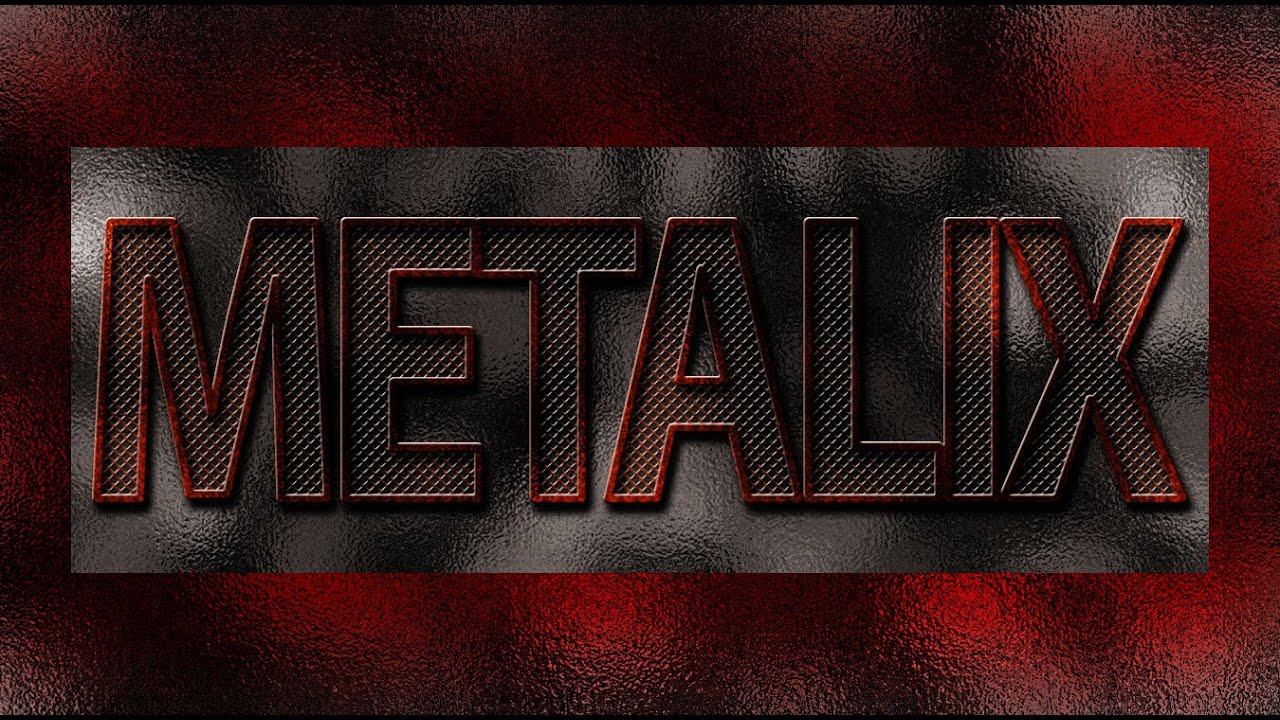Forged in Fire: A Comprehensive Guide to Creating an Epic Metal Text Effect From Scratch

Introduction:
The world of graphic design is a realm where creativity meets craftsmanship, and creating a metal text effect is a powerful way to infuse digital art with an industrial and robust aesthetic. In this extensive guide, we’ll embark on a journey to craft an epic metal text effect from scratch, exploring every step in the process to achieve a result that gleams with the strength and resilience of forged metal.
Section 1: Unveiling the Power of Metal Text Effects
Subsection 1.1: The Impact of Metal in Design
Delve into the impact of metal elements in design, exploring how they convey strength, durability, and a touch of industrial allure. Discuss the versatility of metal text effects in various design contexts, from branding to digital art.
Subsection 1.2: Why Create From Scratch?
Examine the benefits of creating a metal text effect from scratch. Discuss how starting with a blank canvas allows for full creative control, enabling designers to tailor the effect to their specific vision and project requirements.
Section 2: Tools of the Trade
Subsection 2.1: Graphic Design Software
Explore the graphic design software options suitable for creating a metal text effect. Discuss popular choices such as Adobe Photoshop, Illustrator, or other software that provides the necessary tools for text manipulation and layer styling.
Subsection 2.2: Additional Resources and Brushes
Introduce additional resources and brushes that can enhance the creation of a metal text effect. Discuss the importance of high-quality metal textures, brushes, and overlays that can be used to add realistic details and nuances to the design.
Section 3: Laying the Foundation – Text and Fonts
Subsection 3.1: Choosing the Right Font
Guide users through the process of selecting the right font for the metal text effect. Discuss how font choice can influence the overall aesthetic, exploring bold, blocky fonts for an industrial feel or sleek, modern fonts for a more refined metal effect.
Subsection 3.2: Typography Considerations
Discuss typography considerations when working with metal text. Explore aspects such as kerning, letter spacing, and font size to ensure that the text is visually balanced and impactful.
Section 4: Creating the Base Metal Texture
Subsection 4.1: Solid Color Background
Guide users in setting up a solid color background as the canvas for the metal text effect. Discuss how the background color can influence the perceived metal type and provide a foundation for subsequent layers.
Subsection 4.2: Adding Texture and Depth
Explore techniques for adding the base metal texture to the text. Discuss layer styles, gradient overlays, and filters that can be applied to create a textured surface that mimics the appearance of metal.
Section 5: The Alchemy of Layer Styles
Subsection 5.1: Bevel and Emboss
Guide users through the application of bevel and emboss layer styles to add dimension to the metal text. Discuss the settings for depth, size, and shading that create the illusion of raised or recessed metal surfaces.
Subsection 5.2: Inner and Outer Glow
Explore the use of inner and outer glow layer styles to enhance the luminosity of the metal text. Discuss color choices, opacity settings, and techniques for creating a subtle glow that simulates the reflective properties of metal.
Section 6: Refining with Shadows and Highlights
Subsection 6.1: Cast Shadows
Guide users in creating realistic cast shadows for the metal text. Discuss the placement, angle, and opacity of shadows to simulate the interaction between the text and ambient lighting, adding depth and realism to the design.
Subsection 6.2: Highlights and Reflections
Explore the addition of highlights and reflections to enhance the metal effect. Discuss how carefully placed highlights create the illusion of light bouncing off the metal surfaces, contributing to the overall shine and luster.
Section 7: Distressing for Authenticity
Subsection 7.1: Scratches and Dents
Guide users through the process of distressing the metal text for authenticity. Discuss the use of brushes or textures to add scratches, dents, and imperfections that mimic the wear and tear found on real metal surfaces.
Subsection 7.2: Aging and Patina
Explore techniques for adding aging and patina effects to the metal text. Discuss the application of color overlays, gradients, or textures that simulate the weathering of metal over time, contributing to a more authentic and industrial appearance.
Section 8: Polishing the Final Look
Subsection 8.1: Color Adjustments
Discuss the importance of color adjustments in achieving the desired metal effect. Explore adjustments such as hue/saturation, color balance, or selective color to fine-tune the overall appearance and tone of the metal text.
Subsection 8.2: Exporting and Presentation
Guide users in the final steps of exporting and presenting their epic metal text effect. Discuss optimal file formats, resolution considerations, and how to showcase the design in a portfolio or on various digital platforms.
Conclusion:
Creating an epic metal text effect from scratch is a gratifying journey that combines technical skills with artistic vision. By following this comprehensive guide, designers can forge text that embodies the strength, resilience, and industrial allure of metal. From the initial choice of font to the meticulous application of layer styles and distressing techniques, each step contributes to the alchemy that transforms digital letters into metallic masterpieces. Whether used in branding, digital art, or as a striking element in various design projects, the epic metal text effect stands as a testament to the designer’s ability to craft visual experiences that resonate with strength and sophistication.







